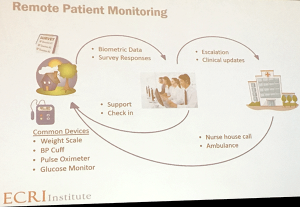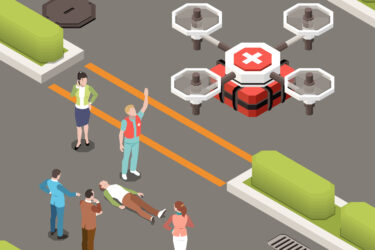 In just the past few years, telehealth has gained some momentum, in part spurred by the opioid epidemic and an aging rural population.
In just the past few years, telehealth has gained some momentum, in part spurred by the opioid epidemic and an aging rural population.
Medicare, in particular, has loosened some of its requirements around telehealth reimbursement starting in 2017, said Mei W. Kwong, executive director for the Center for Connected Health Policy and National Telehealth Policy Resource Center, which tracks state and federal telehealth legislation.
“In the past year and a half there has been some movement,” Kwong said at Health Journalism 2019, during the panel “Is telemedicine finally catching up to the hype?”
Medicare began allowing providers in more regions of the country to get paid for telehealth services for stroke treatment and end stage renal disease recently, Kwong said. And in November 2018, Medicare began allowing providers to conduct quick check ins with established patients via telephone or video for a small reimbursement payment of $14. Medicare also reimbursed for provider to provider consultations over video or phone, using services such as eConsult.
The University of Maryland is working with rural providers in the state in a telehealth program to expand capacity to prescribe buprenorphine, a medication used to treat opioid dependency with harm reduction. Physicians must receive special training to prescribe buprenorphine and there is a shortage of providers available to do so, especially in rural communities.
Aaron D. Greenblatt, M.D., medical director at the University of Maryland Drug Treatment Center, is conducting telehealth buprenorphine prescribing and maintenance with patients in Frederick County, Md. He and his team have also set up a mobile RV to conduct telehealth in Caroline County, Md., and has so far treated 144 patients through this mobile service, he said.
Thomas E. Skorup, vice president of applied solution at the ECRI Institute, said he expects to see continued convergence between telehealth, remote patient monitoring and mobile health. Skorup cited a recent small study of patients with heart failure and COPD that has shown success in reducing hospital visits and improving quality of life.
Reporters interested in covering telehealth should think about the convergence of technologies and how they are working together to serve patients better, panelists said.








